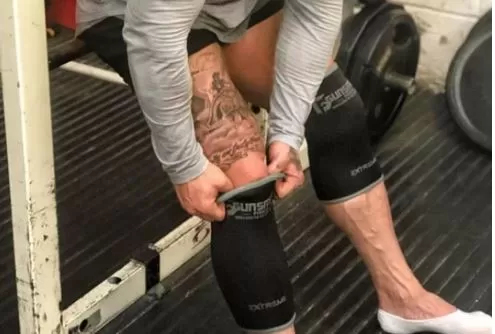Weightlifters, athletes, and casual gym-goers are no longer strangers to knee injuries. It has been a constant source of problems for them and to the medical community. However, modern innovation has given us protective and preventive knee sleeves that reduce the probability of getting knee injuries. It also reduces the severity of knee injuries.
During and after a weightlifting performance, knee sleeves are extremely useful as it provides an element of compression that increases blood flow and reduces pain. Knee sleeves make recovery better because the compression encourages better blood flow through the knee.
What is the difference between knee sleeves and knee braces?
Knee sleeves provide support to the knees. However, it is important to note that it does not function the way knee braces would. Knee sleeves are more for preventive measures – it is designed to protect the knee from future injuries or damage. Knee braces, on the other hand, are used to protect previous injuries from worsening or incurring further damage. Knee braces are also meant to provide protection for the front knee and patella.
When should you use knee sleeves?
When performing exercises such as squats, snatch, or the clean and jerk, knee sleeves are extremely necessary. Why? This is because these exercises require lifting a decent amount of mass. This creates friction on your kneecaps, causing progressive tendonitis, mobility issues, and pain. However, it is not necessary to wear knee sleeves at all weightlifting activities. If the knee is not the primary source of force for your activity, then you can probably skip knee sleeves.
It is also good to wear when running, jumping, or other activities that put your knees in a precarious position. This will allow you to push your limits and do these activities longer. Moreover, it is also good for your form and positioning. Because of the compression knee wraps provide, it can support your patella and joints. This provides significant lateral hold and it also stabilizes your form when you lift heavy weights or when you squat.
It is important to remember that the use of knee sleeves should be complemented with proper equipment and technique to avoid injuries.
What material are most knee sleeves made of?
Knee sleeves are mostly made of neoprene material. This has been the choice for many manufacturers as it provides an adequate amount of support at the same time allowing the knee to heal and strengthen naturally.
What thickness should you use?
Choosing the thickness of your knee sleeves is a crucial decision to make as they serve different purposes.
3mm knee sleeves
This thickness is best for light athletes doing light activities or weightlifters carrying light equipment. It helps them gain control of their knee movement during endurance sports and training. Ideally, athletes should use this when they are starting out and at the end of their workout routine.
5mm knee sleeves
5mm knee sleeves are good for casual gym-goers and their general gym use. It is good for many physical activities such as long-distance running as well. This will be your best friend for activities that requires a balance between agility and support.
7mm knee sleeves
This thickness is appropriate for activities that require heavy lifting and force that focuses on your knees. This will provide the necessary stability when you re trying to scale up your lifts.
